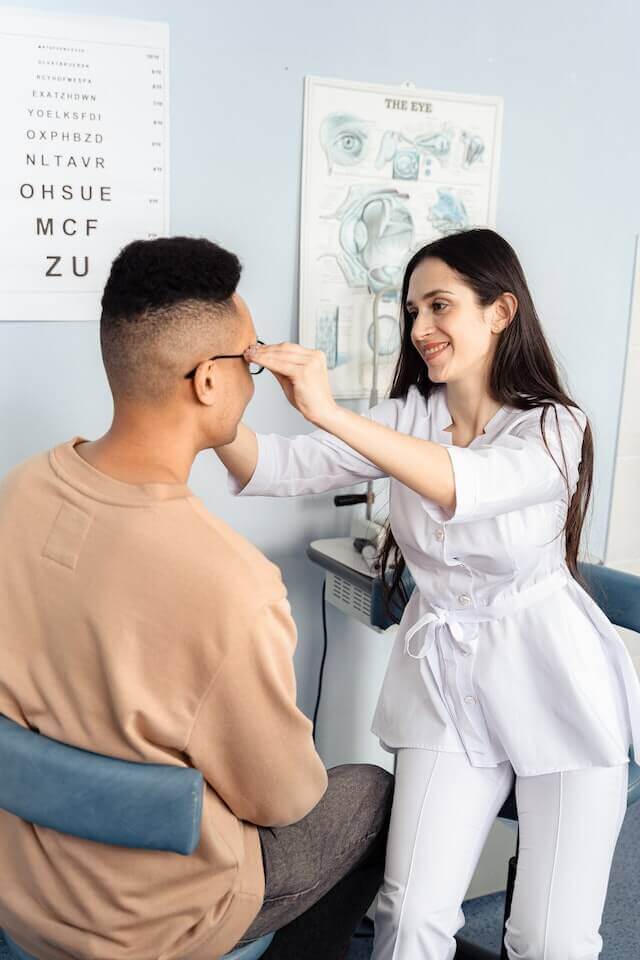Getting Used to New Glasses
Have you ever experienced discomfort after buying new glasses? It’s not uncommon to feel a bit dizzy or see things differently, even with the same prescription. You might wonder if you got the wrong prescription or if the quality of the lenses is to blame. But don’t worry, this is a normal adaptation process that occurs when you get new glasses, whether it’s your first pair or a replacement with prescription.
Understanding the Adjustment Process
Just like breaking in a new pair of shoes, getting used to new glasses has an adaptation period. Even if you know your shoe size and buy shoes that size, they can feel tight and uncomfortable the first few times you wear them. Similarly, your eyes need time to adapt to new glasses, even if the prescription hasn’t changed.

Adjustment for First-Time Glasses Wearers
For those getting their first pair of glasses, it’s completely normal to take a few days to get used to them. During this period, your eyes adjust to how you now see things through the new prescription, especially if you were previously nearsighted without glasses. Wearing glasses provides clearer vision, which might take some getting used to after being accustomed to a blurry world. Additionally, the frames of the glasses might feel like a slight obstruction to your vision, this too will pass as you become accustomed to wearing your new glasses.
Adjustment for Existing Glasses Wearers
For current glasses wearers getting new glasses, several factors can affect the adjustment process:
- Changes in Prescription: Significant changes in prescription can cause discomfort with new eyewear. The adaptation period may be longer for more substantial changes.
- Long-Term Use of Old Glasses: Wearing old glasses for extended periods can result in decreased light transmission and clarity due to wear and tear. Switching to new glasses with improved clarity can take some time to adapt.
- A Change in Lens Type: Changes in lens index or design can change how you see out of the lens and may require additional adaptation, especially if you have sensitive eyes. All lens indices have a different level of clarity through the lens, you can learn more about the differences in the index of the lenses here.
- Frame Style Change: Switching from half-frame or rimless glasses to full-frame ones, or metal frames to plastic ones, can have a different feel on the face or alter your field of vision, leading to a period of adjustment.
- Frame Curvature: Going from a frame that is flat across the frame front to a curved or wrapped frame can cause some discomfort, or what some describe as the fishbowl effect, this is most common when going from clear prescription glasses to prescription sunglasses. It is caused by looking through a curved lens. It does require a few wears to adjust and after time will no longer be noticeable.
Tips for a Smooth Adjustment
Just because it’s normal to have to adapt to new glasses doesn’t mean it has to be a bad experience. Here are some tips to aid in make the adaptation period more comfortable.
- Put Them On Right When You Wake Up: If your new eyeglasses are meant to be worn all day, make sure to put them on when you first wake up in the morning. Your eyes will be fresh and rested, making them more willing to adapt.
- Be aware of prescription changes: Make sure to partner with your optometrist to understand the changes in your new prescription. The more significant the change, the more you can expect there to be an adaptation period.
- Choose Similar Frame and Lens Styles: Opt for frames with parameters similar to your previous ones and lens styles you know work for you. Always take in account your optometrist’s advice.
- For Progressive Wearers: Start by wearing your new glasses indoors and for static activities like reading. Slowly increase the wearing time and move to outdoor activities as you acclimate to your new progressive lenses.
- Proper Eye Posture: Ensure your glasses are correctly positioned on your face so that your pupils are in the right optical position.
- Be Patient: Remember that everyone adapts differently, and it may take anywhere from 2 to 5 days for single-vision glasses or up to 2 weeks for progressive lenses.
With these insights and tips, you’ll find the adjustment process for your new glasses much smoother. If discomfort persists after an appropriate adaptation period, or if you just feel like something is wrong outside of these guidelines, it’s recommended to work with your optometrist to recheck your vision. Embrace your new glasses and enjoy clear, comfortable vision!
About the Author: Dr. Steven Lee
Dr. Steven Lee is a visionary leader in the eye care and telemedicine sectors and has built a remarkable career by combining his formal training in eye care, engineering expertise, and a passion for innovation. Dr. Lee serves as Zenni’s the Head of Optical Product.



 Canada
Canada